A Short History Of The Future: 50 Years Of Modular Synths
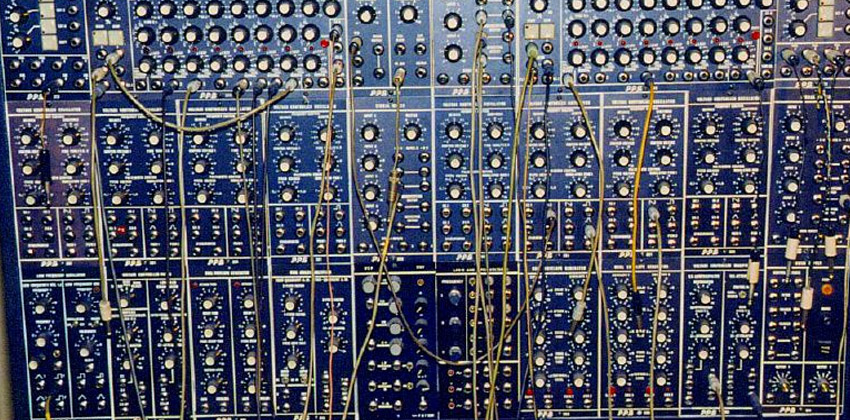
Last year scientists landed a probe on a comet that hurtled through space. They were surprised to discover the comet was ‘singing’ – that is, it was releasing incredibly low frequency modulations, occurring in a pattern that could be interpreted as a song. With a bit of tinkering, the wave forms were boosted to a range audible to the human ear, given a slight sonic dusting by German composer Manuel Senfft, and released to the world.
Like many people, I found this whole process mind blowing. I didn’t know what to expect when I hit play on the first track from the cosmic rock– but I should have. The alien clicks and whirrs sounded almost exactly like the kind of sci-fi musical chicanery the BBC Radiophonic Workshop have been squeezing out of modular synths for years. Comet 67P proved something many of us have long suspected – modular synthesisers sound like the stars.
Arcane, temperamental and Godly, it seems incredible that modular synthesis is such a young discipline. The first models were manufactured in the 60s, with Don Buchla’s 1963 construction, the 100 series Modular Electronic Music System, preceding the more famous Robert Moog construction by a few years. Both the Buchla and Moog systems were built on the concept of multiple units interacting with one another – with signal generators used to create sound that was then passed through a labyrinth of oscillators, envelope generators, filters, voltage controlled amplifiers and sequencers – hence the ‘modular’ title.
Buchla made his instrument to the specifications of pioneering composer Morton Subotnick. Subotnick’s major innovation was looking back to go forward. Whilst other composers working in electronic sound eschewed rhythm in favour of plains of abstract drone, Subotnick sought to apply a recognisable rhythmic framework to the synthetic tones he could create on Buchla’s contraption. His first major work for the synth, 1967’s Silver Apples of the Moon, wild and alien as much of it is, still had enough points of reference that it crossed over from the rarefied world of avant garde composition to become a minor hit – with the emphasis on minor. But the stage was set. Little must have prepared these obscure synth enthusiasts for the explosion that followed.
As Subotnick was releasing Silver Apples, synth enthusiasts Paul Beaver and Bernie Krause had been trying to persuade various Hollywood producers to let them soundtrack a film with the Moog’s otherworldly tones. With little success in scoring a contract from the ever conservative moneymen of Tinsel town, the duo took the Moog to the 1967 Monteray Festival. There they managed to demonstrate it to enough music industry players to generate some interest. What followed were the first tentative fusions of modular synthesis and rock, pop and soul. Reflections by Diana Ross and the Supremes is generally considered one of the first major records to utilise the synth, but like many other early examples, the Moog is reduced to a novelty decoration – a few random bubbles at the start of the track, and an incongruous sweep before the familiar Motown beat kicks in. Other big name artists followed suit – The Doors, Simon & Garfunkel, The Rolling Stones, The Beatles all had a crack at crowbarring a touch of synth magic over their music. None of this dilettante dabbling signalled the start of a revolution. It was something quite different that broke the modular synth into public perception – a record that can now be found in charity shop racks around the land – Wendy Carlos’s Switched on Bach.
Switched on Bach was a gruelling labour of love. Working with an erratic monophonic synthesiser, Carlos, a genius of musical engineering, painstakingly spliced individual notes to 8 track tape, working for months until she had managed the impossible; replicating the dynamic scope and tonal range of a formal orchestra. The results were an instant success. Switched on Bach sold millions worldwide and inspired a generation. A rush of composers followed, notably, the Japanese classicist Tomita who carved the oeuvre of long dead European masters into strange new forms, selling album after album of his cutting edge techniques, creating music that existed in an undiscovered country, a territory between centuries old orchestral formality and space age proto-ambience.
The realisation that these vast contraptions could emulate – and even replace – traditional instrumentation quickly filtered from classical to rock. As the 60s drew to a close and the electric guitar grew passé, kids bought up on a constant rushing thrill of the new were looking for fresh kicks. The majesty and novelty of synthesised sound proved irresistible. By the birth of the 70s a number of English bands who had started life as 60s psychedelic outfits embraced and elevated the new technology. This was the time of Pink Floyd, Yes, and, perhaps the synth masters of them all, Emerson, Lake and Palmer.
ELP started life emulating the classical music craze, with keyboard player Keith Emerson submitting a couple of a classical treatments on their debut album. If this had been all the band offered it’s doubtful they would have gone on to reach the huge international acclaim they did. However, they also included the song Lucky Man, Greg Lake’s folksy acoustic number that closed with Emerson playing an entirely unexpected square wave solo, a soaring, pitch bending worm of sound, splintering through the track and tunnelling into the minds of America’s drop out generation, carrying a million weed highs on a magic carpet ride. Listening back now, the solo still sounds amazing, that fat block of square wave prefiguring a million grime melodies. The doors were blown off. The 70s had begun.
The studious demands of songwriting on a modular synth had a dramatic impact on music. Out went the blues obsessed axe warriors venerating men who could play a storm on a rubber band stretched over a shoe box. In came the sound obsessives, boffins who would happily slave for hours over a mind-bending eco system of wires and knobs, searching for that God note. Inevitably these prog bands embraced complexity – it was encoded into every step of their process. They also embraced concept albums, fashion designed for wizards, 20 minute solos and songs about Stonehenge. Still, it can be reasonably argued that the first explosion of prog pushed the parameters of music further forward than the entire previous decade. On Pink Floyd’s 1970 LP Meddle, the band devoted an entire side of an LP to the pagan freak out Echoes, working from wailing guitar to drones and waves of shimmering noise. It was an aptly titled track, an echo of the sound of England’s mystic past made possible by the instrument of the future.
The prog artists were pulling sounds from the depths of their imagination, and the public lapped it up. The mid 70s saw the Floyd on world conquering form, with Dark Side of the Moon becoming one of the biggest selling LPs of all time. Meanwhile, on the other side of the pond, another British act were bringing synths to a far funkier place. Tonto’s Expanding Head Band consisted of Malcolm Cecil and Robert Margouleff. They had built themeselves The Original New Timbral Orchestra, also known as TONTO, a beast of a machine; vast, near sentient. TONTO consisted of multiple Moogs chained together, along with synths from Oberhim and ARP, and a variety of kit the two had rigged themselves. The pieces stood in cabinets twenty feet in diameter and six feet tall. Look at the photos and marvel– you don’t sit down and play TONTO; you have to walk into it.
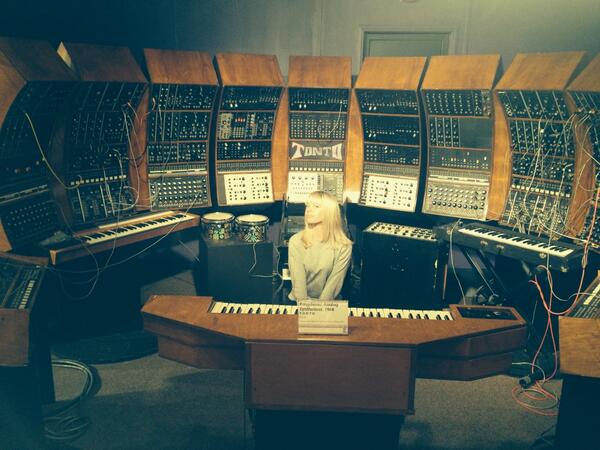
As well as recording two excellent ambient/ prog albums as Tonto’s Expanding Head Band, the duo worked as session musicians, coming to the attention of a host of American soul acts, most notably with Stevie Wonder. TONTO provided the extra magic on a run of Wonder albums that remain touchstones in the soul pantheon – Music of My Mind, Talking Book, Innervisions, Fulfillingness' First Finale and Jungle Fever. They also hooked up with Bobby Womack, Quincy Jones, The Isley Brothers and original boss Gil Scott Heron, providing the futuristic warble on his 1980 album. On both sides of the Atlantic the modular synth reigned supreme.
All good things pass… As such a vital part of the early 70s music scene, the modular synth quickly passed through that well-worn path of any zeitgeist, a quick slide from innovation, to reputation, to saturation. Smaller, portable options such as the all-in-one-box solution of the Mini Moog seemed increasingly attractive (and proved to be a vital piece of kit in Kraftwerk’s ascension). And as the decade drew to a close the awe at those mind-blowing dramatics of the first synth experiments had given way to a certain amount of head scratching. Do these solos have to go on for hours? Do I have to have an engineering degree to write a pop song? Do I have to use an instrument that requires a small truck to shift it about and a small fortune to buy? Punk was knocking.
Anything that took half a day to set up was always going to suffer in a scene that prized bashing out a 3 chord song. In the hackneyed narrative we’ve been sold time and again, punk had little time for the intricacies of complex synths. As with most stories repeated to cliché, this is both kind of true, and a rigid tale that obscures the awkward facts. Whilst the late 70s saw bands such as The Damned, The Pistols, The Clash and The Jam put guitars front and centre, American acts such as Pere Ubu and Devo continued to prize the invention technology bought. In fact, in the mid 90s the TONTO synth was moved to the Devo studios, – it turns out Devo mastermind Mark Mothersbaugh was a long term fan.
Regardless, the 80s saw the mega synths of a decade before hand fall out of favour – at least in the eyes of the taste makers. Whilst the hip sneered, French synth obsessive Jean Michel Jarre built himself an empire. Jarre produced epics of pomp and excess. He was light years away from the dour UK scene of agit politics and tight guitars; a French fop in a floppy shirt playing a keyboard the size of a car, to contemporary eyes he looked like a prat. But the tunes were undeniable. By the start of the 80s his 1976 space opera Oxygene IV had become a global hit, it’s unearthly optimism speaking a common dream of distant stars. On the back of this, Jarre toured the Earth, taking his vast synths and his ridiculous light shows with him, Skrillex without the drops. He had the sales, but he just wasn’t cool.
Meanwhile the rapid changes in tech saw modular synths fall further and further from grace. Roland drum machines and Akai samplers offered cheaper, streamlined options. Computers were becoming a viable home solution. As the 90s started the whole electronic scene had moved on. There were a few innovators keen to situate dance music in a prog time line, with both The Orb and Aphex Twin continuing to explore the possibilities of bewildering networks of wired up units, but in general modular synthesis was consigned to the past.
Now we find ourselves in a different space. It could be argued that the same process that beset those early mega synths has happened with computers – saturation point has been reached, and in a sea of identical VSTs, producers are looking for a way to make unique sounds – something the erratic art of modular synthesis cannot help but do. Simultaneously synth modules have dramatically reduced in price, and a whole new movement is emerging. Techno artists such as Surgeon have long held a love for esoteric sound design, so it’s little surprise that he’s a fan – but he’s also joined by younger producers such as Blawan, Untold and Actress, keen to push their space age melodies into new frontiers. Most telling has been the success of the London Modular Alliance, a 3 man collective that lie somewhere between a shop and a cult. From their base in the former industrial warehouses of Hackney Wick, London Modular have been designing their own cases, working out practical ways of chaining multiple synths for live performance, selling units from their shop front, and taking themselves on the road to run workshops and gigs. This year has seen them travel from the lazer lit confines of sweaty clubs to the hushed environs of Tate Britain and the V&A, filling the spaces with the whoosh and sweep of man co-operating with machine, bringing the dynamics of dance music to the ideals of modular synthesis, and forcing anyone with ears to acknowledge the potency of the format once more. The sound of the future has returned.











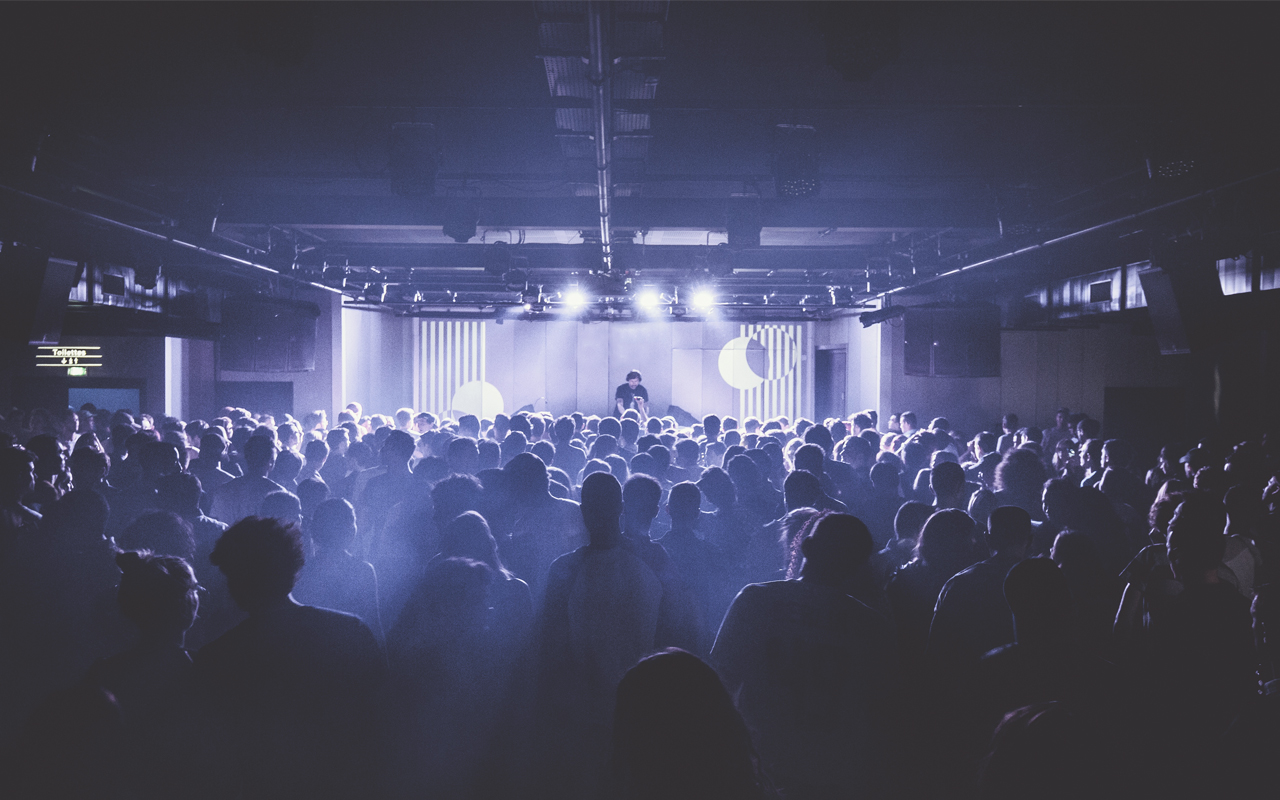
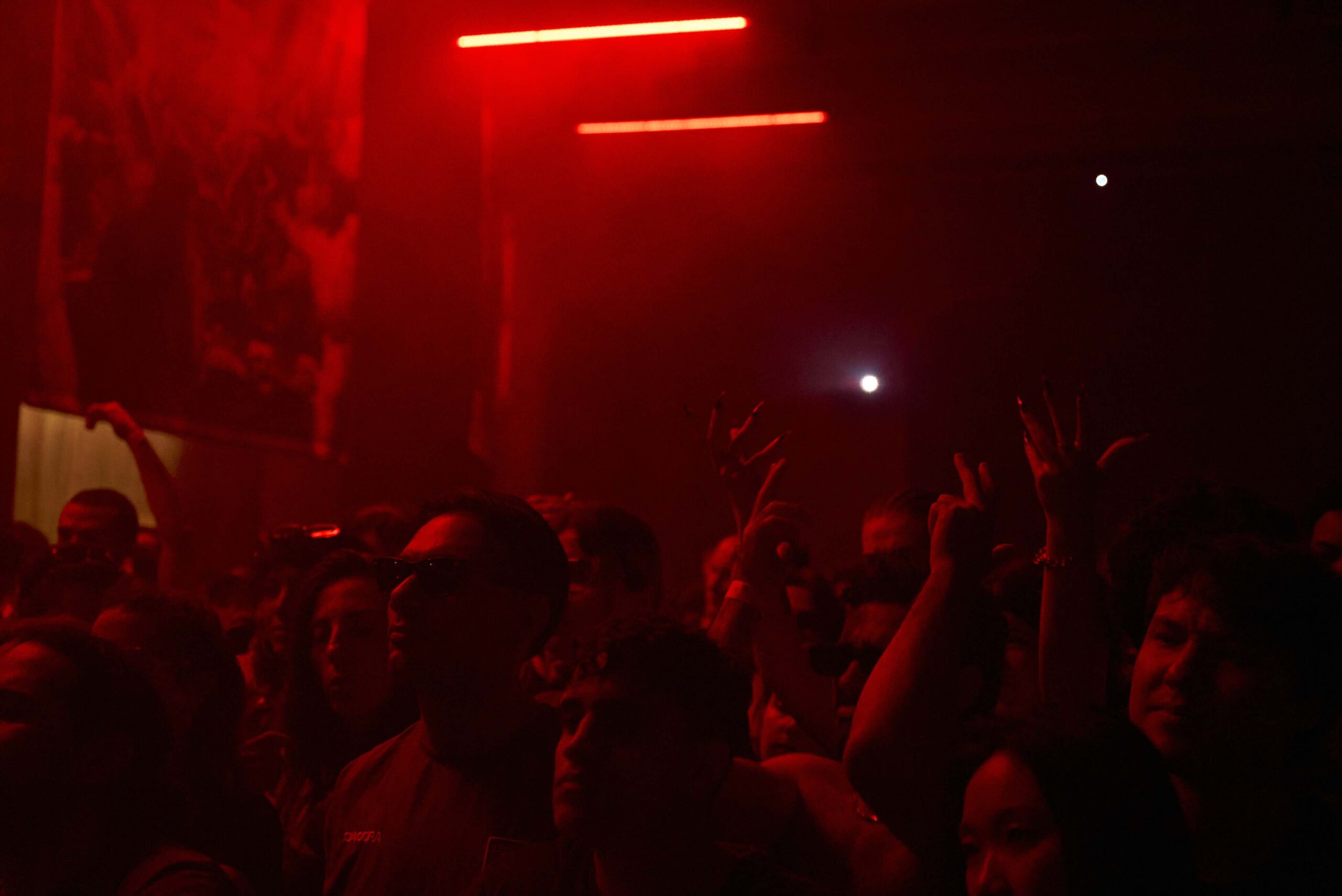
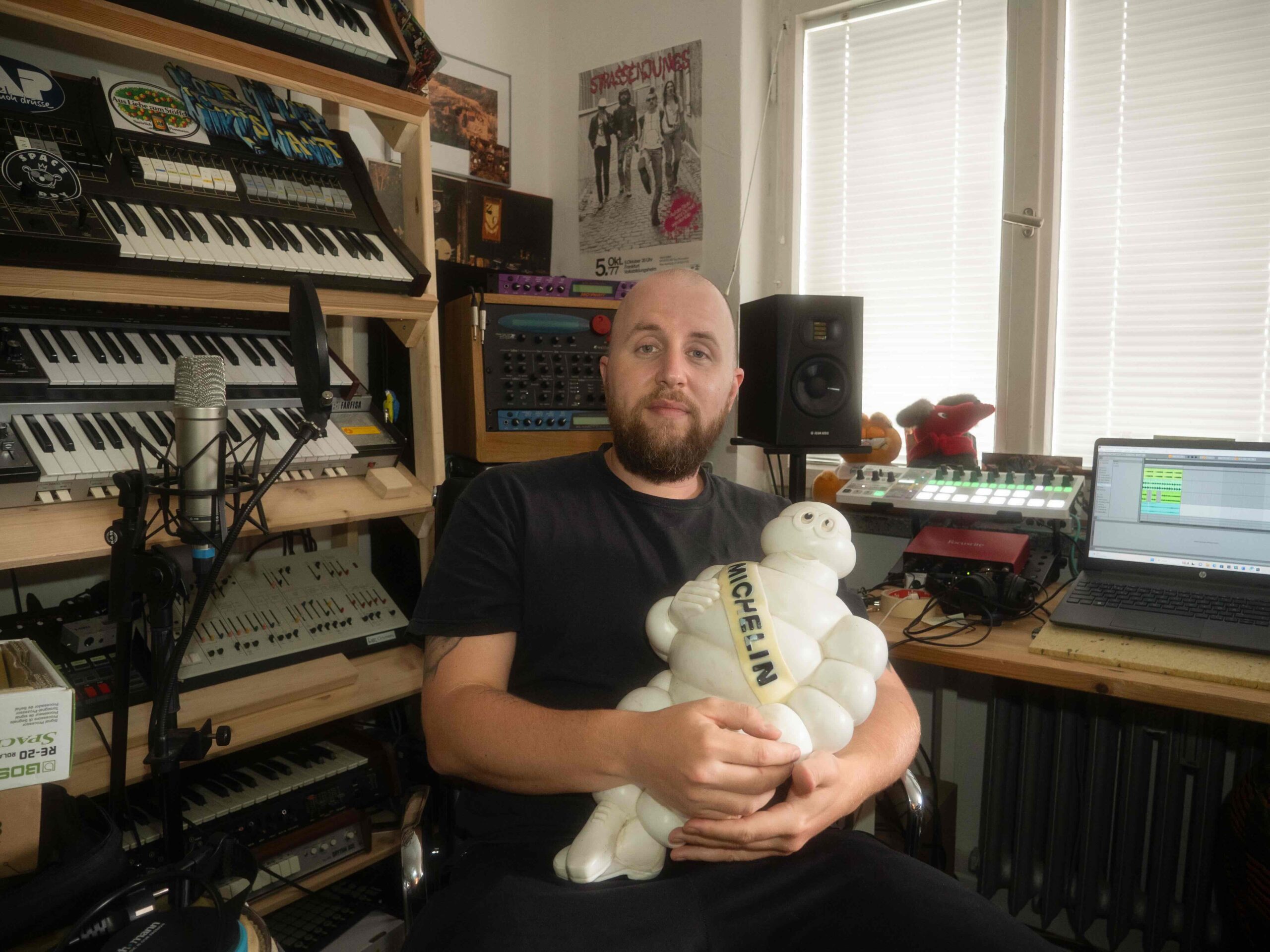



Must Reads
David Holmes – Humanity As An Act Of Resistance in three chapters
As a nation, the Irish have always had a profound relationship with the people of Palestine
Rotterdam – A City which Bounces Back
The Dutch city is in a state of constant revival
Going Remote.
Home swapping as a lifestyle choice
Trending track
Vels d’Èter
Glass Isle
Shop NowDreaming
Timothy Clerkin
Shop Now